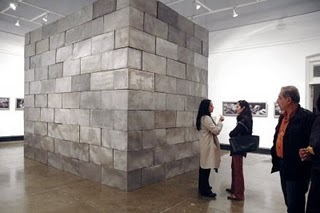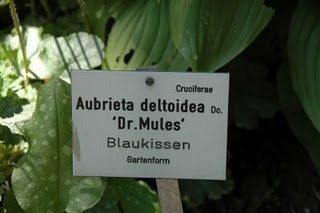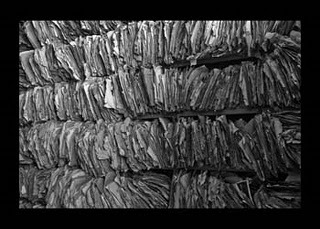HALF-LIFE
New Work
David Alesworth | Huma Mulji
Zahoor ul Akhlaq Gallery
National College of Arts | Lahore | Pakistan
DAVID CHALMERS ALESWORTH
My work has long addressed issues of environmental degradation, cultural attitudes to the notion of nature and nuclearization/weaponisation of the sub‐continent. Growing up one of my earliest memories was of the Cuban missile crisis and the tension in the family home as the world inched ever closer to nuclear conflict. CND marches were a constant feature of the UK in the 1960’s . We now live in an age where nuclear power begins to look like a cleaner solution to our energy needs and nuclear weapons are considered for tactical use. It’s as though the world has forgotten what was unleashed on Japan in 1945. People are calling it the Beginning of the second Nuclear Age.
“12.2.42”
180 Passivated MS boxes, installation variable.
A tribute to Fermi’s first experimental nuclear pile built under the squash courts of Chicago University in 1942. Here on the second of December the first sustaining chain reaction was initiated amidst a stack of graphite blocks and uranium metal. The pile at that time cost around one million dollars to make.
The idea that CP‐1 was built in a university squash court has always appealed to
me. This sculptural installation has other resonances, the formality of artists such as (late period) David Smith, Donald Judd and Karl Andre. This is slightly tongue in cheek reference to such minimalist concerns, through the lens of time and place. This is another prayer for sanity and peace, the way my “Two Bombs Kiss” was in the early ‘90’s. It was within the unshielded CP-1 reactor that plutonium production became a practical proposition. “Seaborg, (the discoverer of Plutonium) was asked to suggest a name for the element he had discovered. He decided to respect the tradition begun with uranium, named for the planet Uranus, then neptunium — the 93rd element, found in 1940 — for Neptune. As the next planet in the solar system was Pluto, he suggested the new element be called plutonium. No one thought to point out that the deity after which the planet Pluto was named was the Greek god of hell, the Roman god of death.” All the Plutonium on the planet now (a completely man‐made element) is around 50 tons; enough, if judiciously employed, to entirely destroy life on the earth. It is undoubtedly the most toxic substance in existence. I see “12.2.42” as part tribute (to scientific endeavor) and part warning (of the imperfect nature of mankind’s knowledge). The smallness of mankind’s achievements set against the vastness of creation. The ultimate failure of all technologies and civilization itself. It is a Vanitas sculpture. It critiques the arrogance of scientific knowledge. I half suspect this world will be sucked through the eye of an atom sized black‐hole, produced in the new Cern accelerator experiements. What a suitable ending it would be for this planet, wrecked as it is, by mankind’s insatiable greed. The units are identical but also quite distorted from the heat of their welding. The proportions of 14 x 14 x 28 inches directly address the scale of one’s body. I investigated other sizes and ratios to arrive at this. It is to do with one’s span. I realize these are very much the concerns of the early minimalists, like Caro, who was once Henry Moore’s protégé. The idea of span and of being body‐scaled are terms that could be right out of Moore’s own vocabulary. Though such concerns are readily discernible in ancient Egyptian sculpture (all of the canonical works.) My undergraduate dissertation was on the cannon of proportion in ancient Egyptian sculpture. I welcome the “wobble” that sign or life. It’s the imperfection that makes energy flow in the work, something I’ve long used in my practice. A tension between stillness and movement. There’s a correlation between the persistence of an official record and that of radioactive waste. I’m thinking of Half-Life as the link between the forest of files (The Record Room Series), undying, unending and uncountable, and the beginning of the nuclear age. Taking Fermi’s first pile CP‐1 as the beginning of this as it was here that Plutonium was first produced, albeit in tiny quantities. On that day that CP-1 first went critical for only 28 minutes and Plutonium was produced in its nuclear flux. Leo Szilard lingered on the balcony until most people had left, then turned to Fermi, shook his hand, and said that he thought the day would go down as a “black day in the history of mankind.” This cube of steel boxes is as much a play with the proportions of the room and scale of the body as it is a reference to nuclear power. Waste from Chicago Pile1 was buried in nearby woodland, this was not a fortuitous beginning to the nuclear age.
me. This sculptural installation has other resonances, the formality of artists such as (late period) David Smith, Donald Judd and Karl Andre. This is slightly tongue in cheek reference to such minimalist concerns, through the lens of time and place. This is another prayer for sanity and peace, the way my “Two Bombs Kiss” was in the early ‘90’s. It was within the unshielded CP-1 reactor that plutonium production became a practical proposition. “Seaborg, (the discoverer of Plutonium) was asked to suggest a name for the element he had discovered. He decided to respect the tradition begun with uranium, named for the planet Uranus, then neptunium — the 93rd element, found in 1940 — for Neptune. As the next planet in the solar system was Pluto, he suggested the new element be called plutonium. No one thought to point out that the deity after which the planet Pluto was named was the Greek god of hell, the Roman god of death.” All the Plutonium on the planet now (a completely man‐made element) is around 50 tons; enough, if judiciously employed, to entirely destroy life on the earth. It is undoubtedly the most toxic substance in existence. I see “12.2.42” as part tribute (to scientific endeavor) and part warning (of the imperfect nature of mankind’s knowledge). The smallness of mankind’s achievements set against the vastness of creation. The ultimate failure of all technologies and civilization itself. It is a Vanitas sculpture. It critiques the arrogance of scientific knowledge. I half suspect this world will be sucked through the eye of an atom sized black‐hole, produced in the new Cern accelerator experiements. What a suitable ending it would be for this planet, wrecked as it is, by mankind’s insatiable greed. The units are identical but also quite distorted from the heat of their welding. The proportions of 14 x 14 x 28 inches directly address the scale of one’s body. I investigated other sizes and ratios to arrive at this. It is to do with one’s span. I realize these are very much the concerns of the early minimalists, like Caro, who was once Henry Moore’s protégé. The idea of span and of being body‐scaled are terms that could be right out of Moore’s own vocabulary. Though such concerns are readily discernible in ancient Egyptian sculpture (all of the canonical works.) My undergraduate dissertation was on the cannon of proportion in ancient Egyptian sculpture. I welcome the “wobble” that sign or life. It’s the imperfection that makes energy flow in the work, something I’ve long used in my practice. A tension between stillness and movement. There’s a correlation between the persistence of an official record and that of radioactive waste. I’m thinking of Half-Life as the link between the forest of files (The Record Room Series), undying, unending and uncountable, and the beginning of the nuclear age. Taking Fermi’s first pile CP‐1 as the beginning of this as it was here that Plutonium was first produced, albeit in tiny quantities. On that day that CP-1 first went critical for only 28 minutes and Plutonium was produced in its nuclear flux. Leo Szilard lingered on the balcony until most people had left, then turned to Fermi, shook his hand, and said that he thought the day would go down as a “black day in the history of mankind.” This cube of steel boxes is as much a play with the proportions of the room and scale of the body as it is a reference to nuclear power. Waste from Chicago Pile1 was buried in nearby woodland, this was not a fortuitous beginning to the nuclear age.
“Doomsday Clock Will Move Closer to Midnight.
WASHINGTON, DC, January 12, 2007 (ENS) ‐ The minute hand of the Doomsday Clock will be moved closer to midnight on January 17, the first such change to the clock since February 2002. The Doomsday Clock has become a universally recognized indicator of the world’s vulnerability to nuclear weapons and other threats.” The move was announced today by the Board of Directors of the magazine “The Bulletin of the Atomic Scientists.” It reflects growing concerns
about what the board calls a “Second Nuclear Age” marked by grave threats. The board also cited “escalating terrorism, and new pressure from climate change for expanded civilian nuclear power that could increase proliferation risks.” The Doomsday Clock is now set at seven minutes to midnight. The Doomsday Clock is a symbolic clock face that the Bulletin has maintained since 1947 at its headquarters on the campus of the University of Chicago. It uses the analogy of
the human race being at a time that is a “few minutes to midnight” where
midnight represents destruction by nuclear war. The decision to move the minute hand is made by the Bulletin’s Board of Directors in consultation with its Board of Sponsors, which includes 18 Nobel Laureates. The “Bulletin of the Atomic Scientists” was founded in 1945 by University of Chicago scientists who had worked on the Manhattan Project and were deeply concerned about the use of nuclear weapons and nuclear war.
about what the board calls a “Second Nuclear Age” marked by grave threats. The board also cited “escalating terrorism, and new pressure from climate change for expanded civilian nuclear power that could increase proliferation risks.” The Doomsday Clock is now set at seven minutes to midnight. The Doomsday Clock is a symbolic clock face that the Bulletin has maintained since 1947 at its headquarters on the campus of the University of Chicago. It uses the analogy of
the human race being at a time that is a “few minutes to midnight” where
midnight represents destruction by nuclear war. The decision to move the minute hand is made by the Bulletin’s Board of Directors in consultation with its Board of Sponsors, which includes 18 Nobel Laureates. The “Bulletin of the Atomic Scientists” was founded in 1945 by University of Chicago scientists who had worked on the Manhattan Project and were deeply concerned about the use of nuclear weapons and nuclear war.
“The Garden of Babel”
A grid of botanical accession labels from Linz (Austria) and Lahore. I believe all work is essentially autobiographical. My grandfather was the horticulturalist, F.W. Alesworth, a rose is named after him. He taught me my first name in horticultural Latin, something I still had yet to study at school. These names in all their authority and scientific exactitude are threaded through and through with tales of conquest and aspirations of immortality. They speak of the earliest attempts to order the natural world. Beginning with Theophrastus in 300 AD, and for me ending with John Ray (he wrote it, Wray), not the upstart Linnaeus. Perhaps the names of Neem and Bachain say it all. Azadarachta Indica and Melia Azadarachta respectively. An Ash like leaf (Bachain) and both the Free-Tree’s-of-India), this co‐opting of language is typical of botanical Latin. It is a specialist, insider’s secret language and as equally imperfect an attempt at creating logical order as the Record Room itself.
Botanical accession labels are often grey or black and the whole assemblage feels like a mausoleum to me. A graveyard for nature, epitomized as “the garden”. This also serves as a pointer to environmental issues, as so many plant names may actually survive the species (in the wild) in many cases. Many of these names are embedded with tales of Empire, the names of Victorian naturalists, indigenous names Latinized and other slight problems in the overall scheme of things. To say nothing of the need for constant revision as new discoveries lead to new classifications of relatedness. The books “All the Names” (Jose Samarago) and “The Naming of Names” (Anna Parvord) were inspirations for this work.
“The Record Room” series 2009.
Monochrome archival, digital C-Prints. Galvanized and passivated
steel-frames, 2009.
These myriad vehicle papers are more akin to a living entity than an official archive. They represent the dreams of countless families for progress, modernity and the transformation of their lives. This is failed order, individually and collectively; as a species our attempts to control and order the world are doomed to fail, for we forget that we are also nature. The images of this record-room are for me beautiful and tragic. They are 18 million files, 18 million dreams, a poignant metaphor for the populace of Karachi. My own records were found here in a matter of minutes. I was invited to view this record-room after commenting on the speedy delivery of my own file. I fell in love with it instantly and have been begging my way back with an assortment of cameras ever since. It is a dying (physical) archive the files are being scanned and destroyed currently and should cease to exist entirely in a few years. I’ve seen the facility shrink like the loss of forestation, the demise of a coral‐reef or the melting of glaciers, for this is something like nature itself. Somehow in all it’s dog‐eared, rubbed till soft existence (so handled these records become almost living); the archive actually works. It functions daily at huge volumes and serves the inhabitants well for without their cooperation nothing will ever be found. One can read the staff’s valiant attempts to manage the deluge of incoming paper, abandoning the expensive (but rapidly collapsing steel shelving) in favor of old fruit crates. The failure to create order in the record room for me becomes a Vanitas subject, a gentle reminder of our ultimate individual decay and demise as a part of nature itself.
Tags: Autobiography, Current Work, environment, Gardening, Half-Life, Installation, Reading, Research, Science, Sculpture, show, Transart






